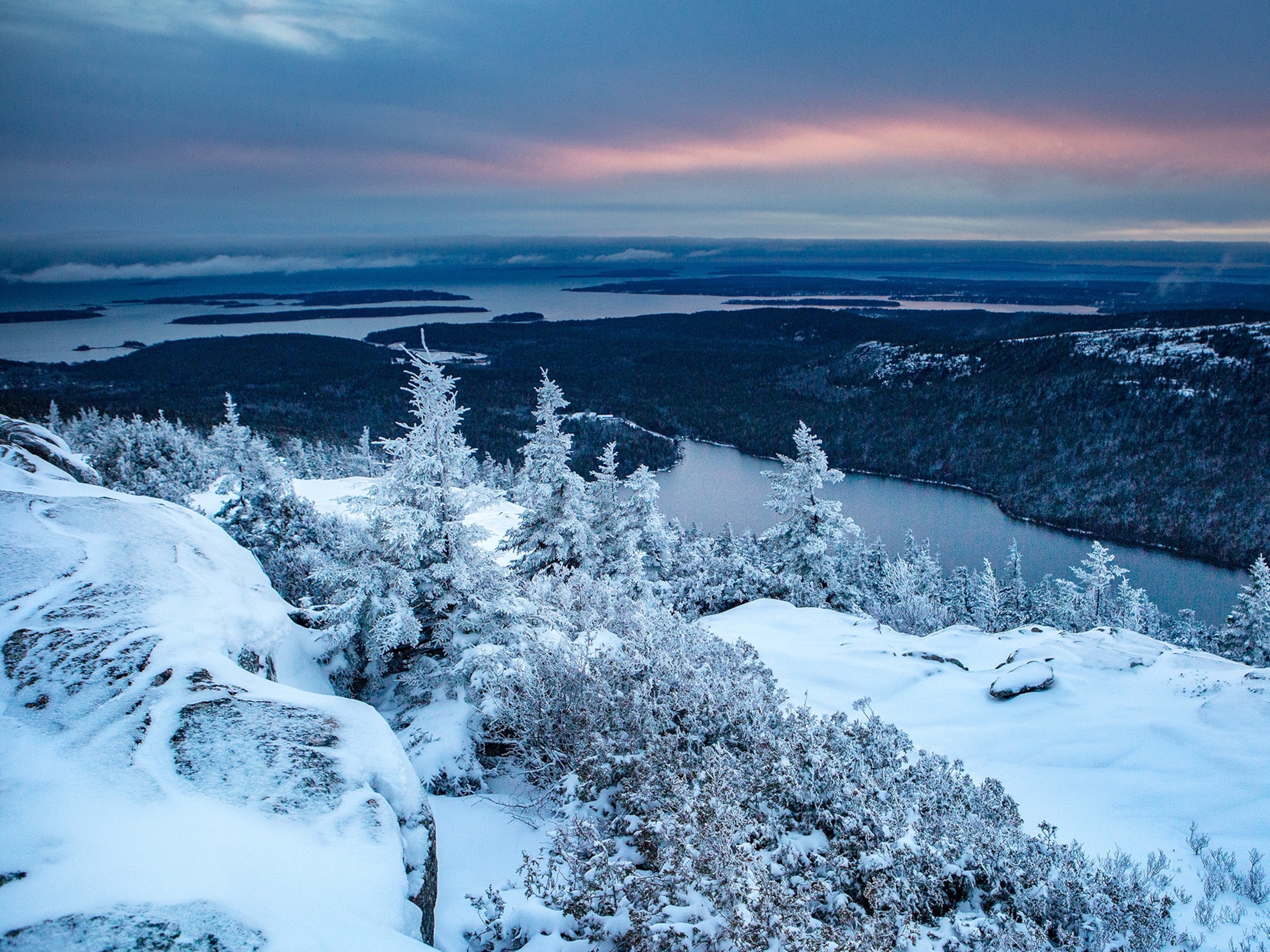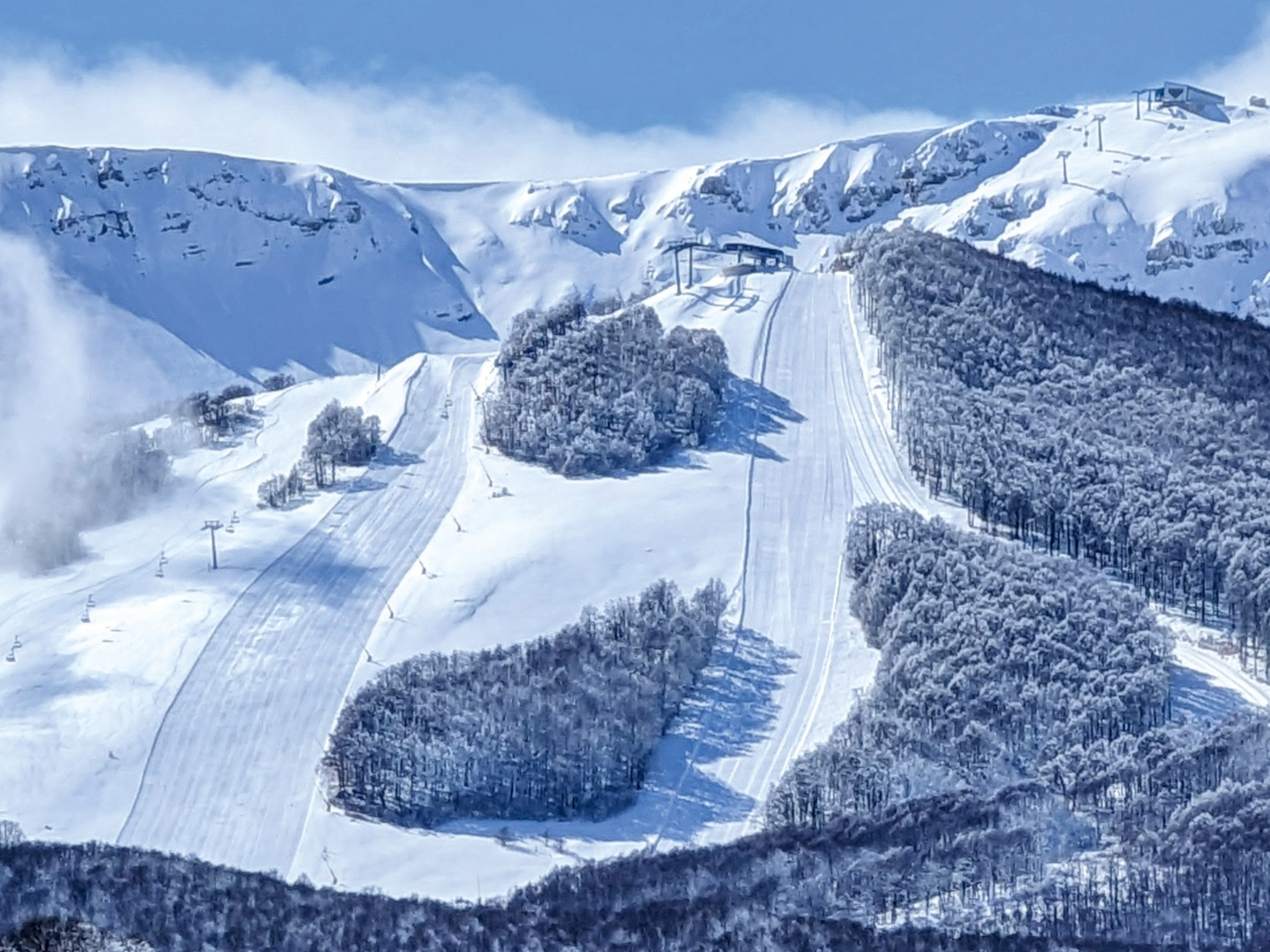
Mars Snow Falls Like Dry Ice Fog
Tiny crystals no bigger than red blood cells, NASA data suggest.
In the dead of Martian winter, the snowflakes that blanket the planet's poles are no bigger than red blood cells, according to a new study of the icy particles.
The results suggest that, rather than resembling a blizzard, Mars snow would probably look like fog as it fell.
Previous data from NASA's Phoenix mission revealed snow falling near the red planet's north pole as the seasons turned from summer to fall. At the time the air was relatively warm, so those ice crystals were most likely made from water, scientists say.
But when temperatures drop in winter to -193 degrees Fahrenheit (-125 degrees Celsius), it gets cold enough for carbon dioxide in the Martian atmosphere to freeze, creating clouds of dry ice that can reach from the poles to halfway to the equator.
(Related: "Martian-Fog Study Finds Thick Haze, 'Diamond Dust.'")
So far, no Mars landers have survived near the poles during winter. So to learn more about the carbon dioxide snow, researchers at the Massachusetts Institute of Technology analyzed data spanning 15 years and gathered by NASA orbiters.
Measuring Snowflakes From Orbit
Information from the Mars Reconnaissance Orbiter helped scientists predict where the clouds are likely to form, based on the temperature and pressure conditions under which such snow can develop.
In addition, the snow and frost deposits add enough mass each winter to alter the planet's gravitational field by a tiny amount.
Using gravity data from the Mars Global Surveyor, the team estimated how much carbon dioxide snow piles up at both poles seasonally. That probe also showed the amount of light reflected by snow clouds, which helped the researchers determine the clouds' density.
(Related: "Earth Has 'Spare Tire'—And Ice Melt's Keeping It That Way.")
Combining the data, the team was able to pinpoint the number and sizes of snow particles within the clouds.
Around the south pole, carbon dioxide snow particles ranged from 4 to 13 microns—for comparison, the average human red blood cell is 6 to 8 microns wide.
Around the north pole, where the atmosphere is much denser, snow particles range from 8 to 22 microns. On Earth snowflakes tend to be much bigger, around ten millimeters wide.
Snow Size Affects Mars Climate?
Knowing the size of snowflakes on Mars could be "very helpful" in understanding the overall properties of the Martian atmosphere, according to study co-author Kerri Cahoy of MIT.
Drops of precipitation, including snow crystals, usually form around atmospheric particles such as dust.
But it could be that carbon dioxide snow particles don't need dust grains to form—instead they somehow coalesce directly from the air, Cahoy said.
(Related: "Huge Spirals Found on Mars—Evidence of New Lava Type?")
In addition, the size and composition of Martian snow influences which wavelengths of sunlight the ice crystals absorb and reflect, said study co-author Renyu Hu, also at MIT.
A better understanding of how the snow particles range in size may therefore yield insight into how much of the sun's energy the planet absorbs—the process that drives Martian climate.
The Mars-snow study will appear in an upcoming issue of the Journal of Geophysical Research.





